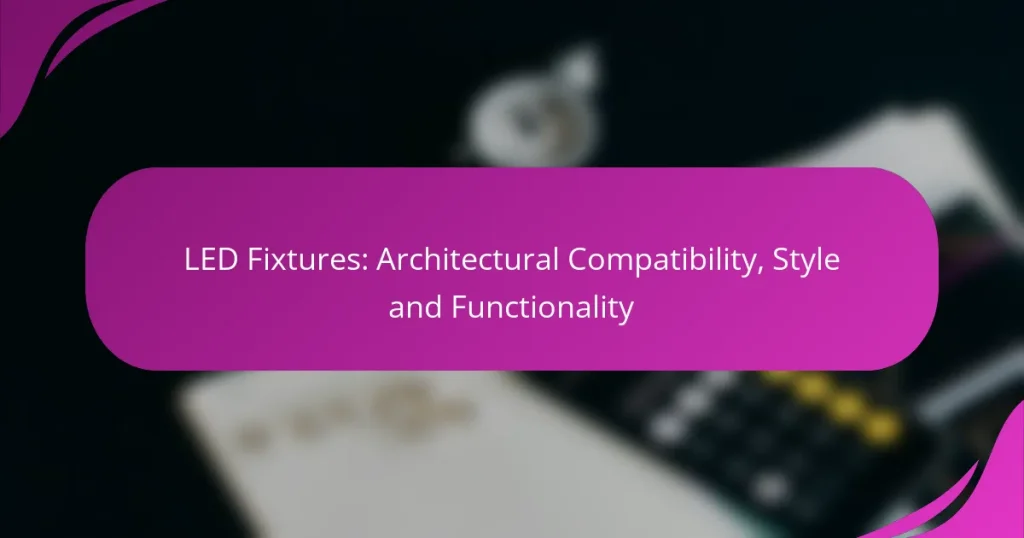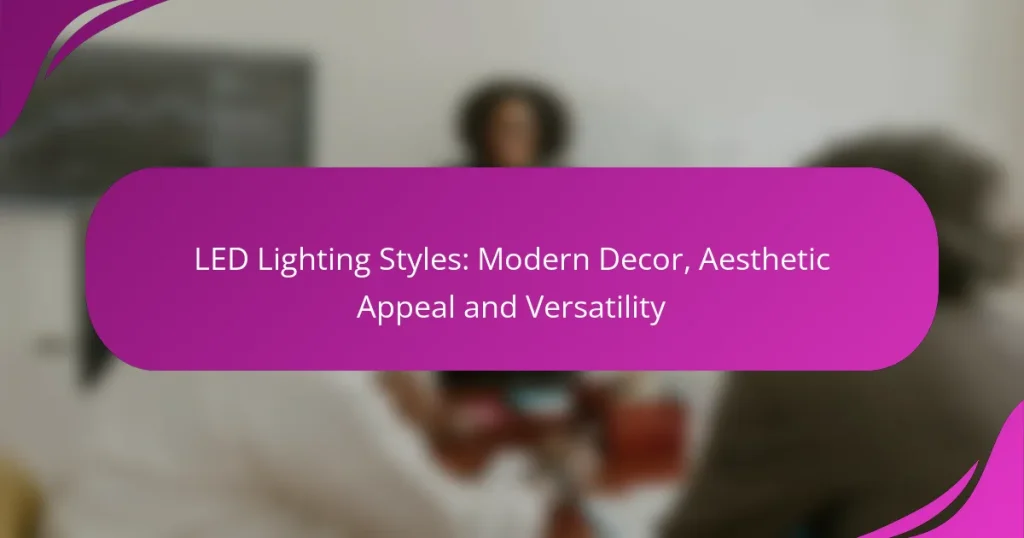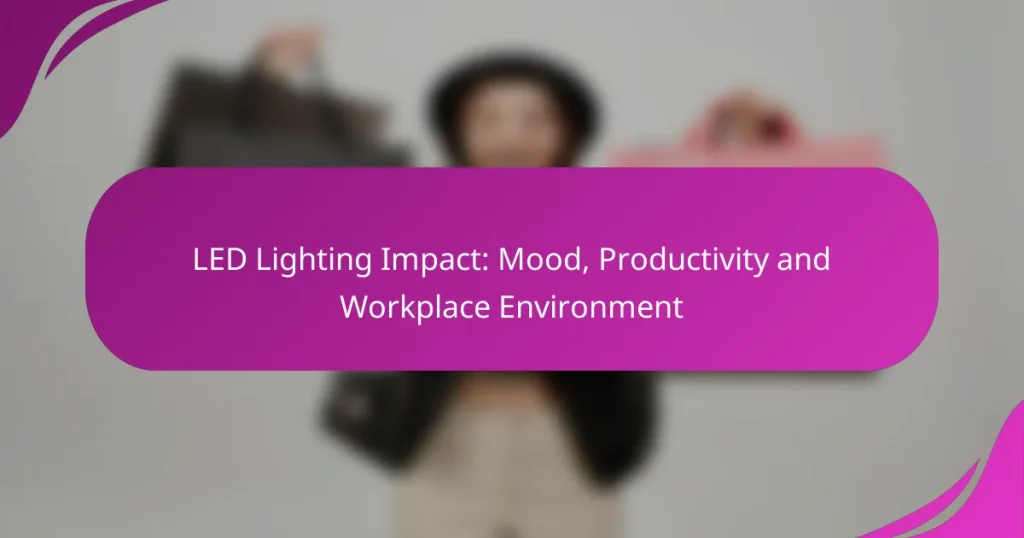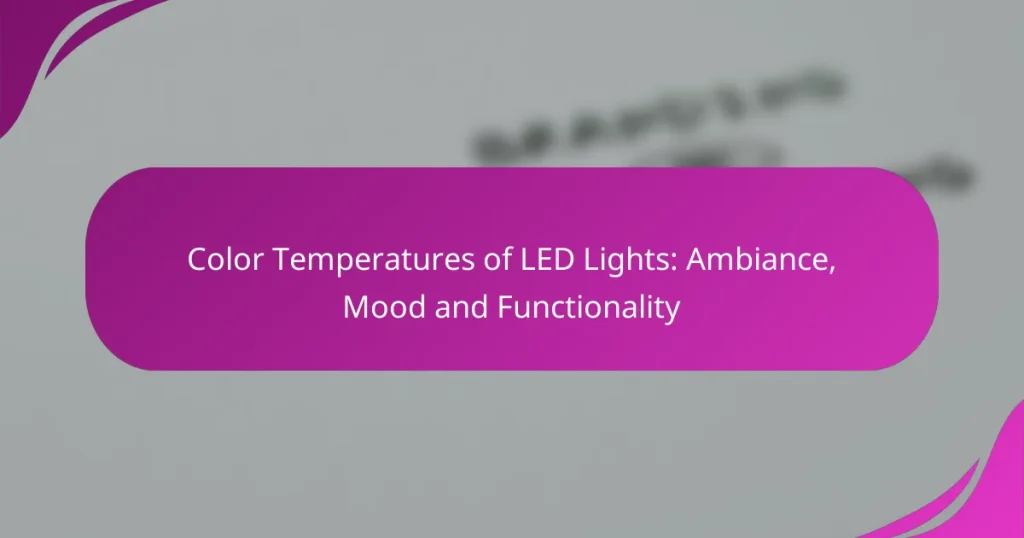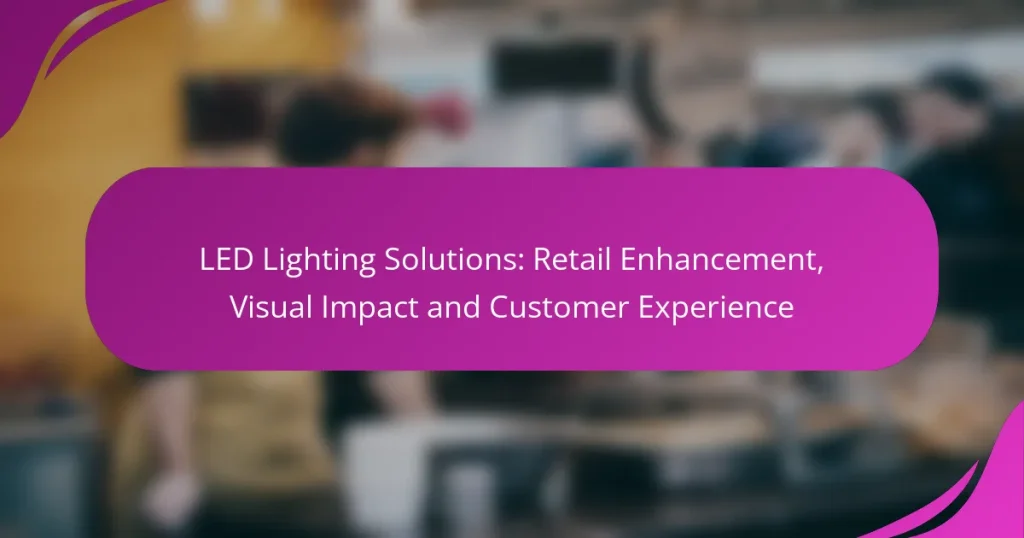LED lighting design plays a crucial role in enhancing the aesthetics of residential spaces in the UK. By understanding the unique requirements of each room and effectively layering light sources, designers can create inviting environments that reflect individual styles. The versatility of LED technology allows for vibrant colors and varied intensities, making it an ideal choice for modern, industrial, and smart lighting solutions.
LED Lighting Styles: Modern Decor, Aesthetic Appeal and Versatility
LED Lighting Impact: Mood, Productivity and Workplace Environment
Color Temperatures of LED Lights: Ambiance, Mood and Functionality
LED Lighting Solutions: Retail Enhancement, Visual Impact and Customer Experience
How to design LED lighting for residential spaces in the UK?
Designing LED lighting for residential spaces in the UK involves understanding the unique requirements of each room and how to effectively use light to enhance the environment. Key considerations include layering light sources, selecting appropriate color temperatures, and integrating controls for flexibility.
Layered lighting techniques
Layered lighting techniques involve combining different types of lighting to create a balanced and functional atmosphere. This typically includes ambient, task, and accent lighting. For instance, in a living room, ambient lighting can come from ceiling fixtures, task lighting from table lamps, and accent lighting from LED strips highlighting artwork.
To effectively layer lighting, consider the purpose of each space. In kitchens, for example, bright task lighting is essential for food preparation, while softer ambient lighting can create a welcoming atmosphere for dining.
Choosing the right color temperature
Color temperature significantly impacts the mood and functionality of a space. Measured in Kelvin (K), warmer tones (around 2700K-3000K) are ideal for cozy areas like bedrooms and living rooms, while cooler tones (4000K-5000K) work well in workspaces and kitchens.
When selecting LED bulbs, consider the activities that will take place in each room. For example, a home office may benefit from cooler lighting to enhance focus, while a relaxation area should have warmer tones to promote comfort.
Incorporating dimmers and controls
Dimmers and smart controls allow for greater flexibility in lighting design, enabling homeowners to adjust brightness according to mood and activity. Installing dimmer switches can help create a more versatile environment, particularly in spaces used for multiple purposes.
Consider smart lighting systems that can be programmed or controlled via smartphone apps. This not only enhances convenience but also allows for energy savings by adjusting light levels based on occupancy or time of day.
Utilizing natural light
Incorporating natural light into your LED lighting design can significantly enhance the overall ambiance of a space. Strategically placing mirrors and using light-colored furnishings can help reflect and amplify daylight, reducing the need for artificial lighting during the day.
When designing a room, consider the placement of windows and how they interact with your LED fixtures. For example, using sheer curtains can diffuse sunlight while still allowing natural light to illuminate the room.
Creating focal points with LED fixtures
LED fixtures can be used to create striking focal points in a room, drawing attention to specific areas or features. Pendant lights over dining tables or LED wall sconces highlighting artwork can serve as both functional and aesthetic elements.
When selecting fixtures, consider their size and design in relation to the space. Larger rooms may benefit from bold, statement pieces, while smaller areas might require more subtle lighting solutions to avoid overwhelming the space.
What are the aesthetic benefits of LED lighting?
LED lighting offers significant aesthetic advantages, enhancing both the appearance and ambiance of spaces. Its ability to produce vibrant colors and varied intensities allows for creative expression in design.
Enhanced visual appeal
LED lighting can dramatically improve the visual appeal of any environment. With options for color temperature ranging from warm to cool, designers can create inviting atmospheres or energizing spaces depending on the setting. For example, warmer tones are often used in residential areas to promote comfort, while cooler tones can be effective in commercial spaces to enhance productivity.
Additionally, the compact size of LED fixtures allows for innovative installations, such as recessed lighting or accent features that highlight architectural elements. This flexibility can transform ordinary spaces into visually stunning environments.
Energy efficiency and sustainability
LED lights are known for their energy efficiency, consuming significantly less power compared to traditional incandescent or fluorescent bulbs. This not only reduces electricity bills but also decreases the overall carbon footprint of a building. For instance, switching to LED lighting can lead to energy savings of up to 75%.
Moreover, LEDs have a longer lifespan, often lasting tens of thousands of hours, which means fewer replacements and less waste. This sustainability aspect aligns with growing environmental concerns and regulations, making LED lighting a responsible choice for both residential and commercial applications.
Versatile design options
The versatility of LED lighting allows for a wide range of design options. From strip lights to smart bulbs, the adaptability of LEDs can cater to various aesthetic preferences and functional needs. Designers can easily integrate LEDs into furniture, cabinetry, and even outdoor spaces to create cohesive designs.
Furthermore, the availability of smart LED technology enables users to control brightness and color remotely, allowing for dynamic changes in ambiance. This feature is particularly useful in settings like restaurants or event spaces where mood lighting can enhance the overall experience.
Which LED lighting styles are popular in the UK?
In the UK, popular LED lighting styles include modern minimalist designs, industrial-style fixtures, and smart lighting solutions. These styles cater to various aesthetic preferences while offering energy efficiency and versatility.
Modern minimalist designs
Modern minimalist designs focus on simplicity and clean lines, often using LED strips or recessed lighting to create a sleek look. This style emphasizes functionality without unnecessary embellishments, making it ideal for contemporary spaces.
When implementing minimalist lighting, consider using warm white LEDs to create a cozy atmosphere. Avoid overly ornate fixtures; instead, opt for simple shapes and finishes that blend seamlessly with your decor.
Industrial-style fixtures
Industrial-style fixtures often feature raw materials like metal and exposed bulbs, creating a rugged, urban aesthetic. LED options in this category can mimic the look of traditional incandescent bulbs while providing energy savings.
To achieve an industrial look, consider pendant lights with a matte black or brushed steel finish. Pair these with Edison-style LED bulbs for an authentic vintage feel that complements loft-style apartments or modern homes.
Smart lighting solutions
Smart lighting solutions allow for customizable control of LED fixtures through apps or voice commands. This technology enables users to adjust brightness, color, and schedules, enhancing both convenience and energy efficiency.
When selecting smart LED lights, ensure compatibility with your existing home automation systems. Look for products that support multiple platforms, such as Amazon Alexa or Google Assistant, to maximize usability and integration.
How to choose the right LED fixtures for your project?
Choosing the right LED fixtures involves considering factors like lumen output, beam angles, and fixture materials. These elements will significantly impact the lighting quality and overall aesthetic of your project.
Assessing lumen output
Lumen output measures the total amount of visible light emitted by a fixture. When selecting LED fixtures, aim for a lumen output that matches the intended use of the space; for example, residential areas typically require around 100-200 lumens per square meter, while workspaces may need 300-500 lumens per square meter.
Consider the brightness level you desire and how it complements the room’s function. Too few lumens can lead to a dim environment, while excessive brightness can cause discomfort. Always check the specifications of the fixtures to ensure they meet your lighting needs.
Understanding beam angles
Beam angle refers to the spread of light emitted from a fixture. A narrow beam angle (less than 30 degrees) is ideal for highlighting specific areas, while a wider beam angle (over 60 degrees) is suitable for general illumination. Choosing the right beam angle can enhance the visual appeal of a space.
When selecting fixtures, consider how the beam angle will affect the lighting distribution. For example, track lighting with adjustable beam angles can provide versatility in directing light where it’s needed most. Experimenting with different angles can help achieve the desired ambiance.
Evaluating fixture materials
The materials used in LED fixtures can influence durability, heat dissipation, and aesthetic appeal. Common materials include aluminum, plastic, and glass, each offering unique benefits. Aluminum is lightweight and excellent for heat management, while glass can provide a more elegant look.
When evaluating fixture materials, consider the environment where the fixtures will be installed. For outdoor settings, choose weather-resistant materials to ensure longevity. Additionally, assess the finish and color of the materials to ensure they align with your design vision.
What are the installation considerations for LED lighting?
When installing LED lighting, key considerations include electrical requirements, placement and spacing, and compliance with local regulations. Proper attention to these factors ensures optimal performance and safety of the lighting system.
Electrical requirements
LED lighting systems typically require a compatible power supply, often operating at low voltage, such as 12V or 24V. It’s crucial to check the wattage and ensure that the circuit can handle the total load without exceeding its capacity.
Using dimmers with LED lights can enhance functionality, but not all dimmers are compatible. Look for LED-specific dimmers to avoid flickering and ensure smooth operation.
Placement and spacing guidelines
When positioning LED fixtures, consider the intended use of the space. For general lighting, fixtures should be spaced evenly to avoid dark spots, typically around 1.5 to 2 meters apart, depending on the fixture’s brightness.
For task lighting, such as under-cabinet lights in kitchens, ensure that the fixtures are placed to minimize shadows and provide adequate illumination on work surfaces.
Compliance with UK regulations
In the UK, LED installations must comply with the IET Wiring Regulations (BS 7671). This includes ensuring that all electrical work is carried out safely and by qualified personnel.
Additionally, consider energy efficiency standards, as LED lighting is often subject to regulations that promote energy-saving technologies. Ensure that your products are compliant with the relevant EU directives, such as the Ecodesign Directive.
What are the costs associated with LED lighting design?
The costs associated with LED lighting design can vary widely based on factors such as project scope, fixture types, and installation complexity. Generally, initial expenses may be higher than traditional lighting, but long-term savings from energy efficiency and reduced maintenance often offset these costs.
Initial Costs
Initial costs for LED lighting design typically include the price of fixtures, installation, and any necessary electrical upgrades. Depending on the quality and brand, LED fixtures can range from a few dollars to several hundred dollars each. Installation costs can also vary, often falling between 20% to 50% of the total project budget.
Long-term Savings
LED lighting is known for its energy efficiency, which can lead to significant savings on electricity bills. Over time, these savings can amount to 50% to 80% compared to traditional lighting solutions. Additionally, LEDs have a longer lifespan, often lasting up to 25,000 hours or more, which reduces replacement costs.
Maintenance Costs
Maintenance costs for LED systems are generally lower due to their durability and longevity. While traditional bulbs may require frequent replacements, LEDs can last years without needing attention. This reduced frequency of replacement translates to lower labor costs and less disruption in both residential and commercial settings.
Return on Investment
Calculating the return on investment (ROI) for LED lighting design involves assessing both the initial costs and the long-term savings. A typical ROI period for LED installations can range from 2 to 5 years, depending on usage and local energy prices. Businesses often find that the upfront investment pays off quickly due to reduced energy and maintenance expenses.
